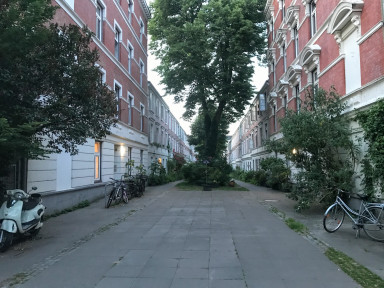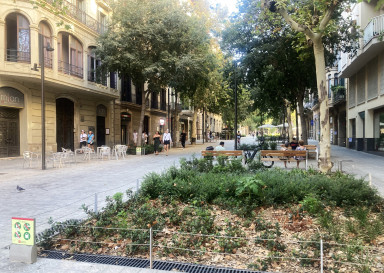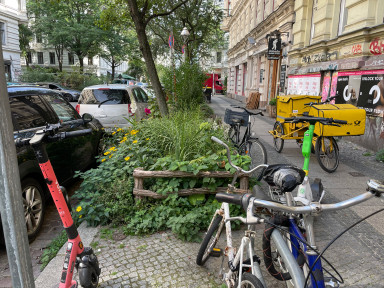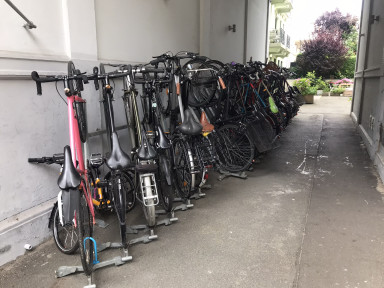Mobility in the making
A comparative examination of negotiation processes in mobility experiments
In order to advance mobility transformations that aim to reduce motorized private transport, cities are increasingly implementing local experiments, some of which are strongly promoted by civil society actors. While the transformative potential of experiments is ascribed to their function as spaces for negotiation, research has hardly questioned this assumption. Therefore, this project investigates negotiation processes between civil society and public actors in mobility experiments that test a redistribution of street space. This is done by contrasting two such experiments in a comparative in-depth case study analysis. Ultimately, the research aims to contribute to our understanding of experimentation as a means of ‘making’ urban mobility.
- experimentation
- mobility
- negotiation processes
- urban governance
- civil society
Context
Cities are considered crucial in the fight against climate change. As such, they are increasingly becoming sites of experimentation, with some addressing urban mobility – a sector generating a particularly high proportion of overall climate emissions. In parallel, civil society actors are taking the initiative in promoting neighbourhood-level mobility transformations that aim to reduce motorized private transport. Some of these initiatives are supported by public actors, resulting in experiments that seek to test a redistribution of space in which car traffic is reduced and active mobility promoted.
Negotiations between the parties involved lie at the heart of such experiments: The negotiation of expectations, uncertainties, and envisioned futures translates them into concrete actions. In the process, social relations are remapped.1 Ultimately, the experiment’s capacity to function as a space for negotiation determines its potential for structural change.2
Aims
This project aims to investigate the negotiation processes attributed to urban experimentation. A conceptualization and an understanding of these processes are crucial to discussing experiments as a means of ‘making’ mobility. Specifically, knowledge on negotiations between various civil society and public actors can shed light on the understudied role civil society plays in experiments and hence in shaping urban mobility. It further contributes to comprehending how relations between public and non-public actors are (re)conceptualized through experimentation.
Therefore, this thesis seeks to answer the question: How is local mobility negotiated between civil society and public actors in urban neighbourhood-level experiments? More particularly, the study examines the structures and outcomes of negotiation processes occurring in local mobility experiments and assesses what (power) relations emerge in and beyond these experiments. This is done by contrasting two cases that are studied in-depth.
The research adds to our understanding of how and by whom urban mobility is produced, thereby contributing to the academic debate on both sustainable mobility and urban experimentation, also touching upon concerns raised by critical approaches. The project’s comparative dimensions provide fundamental insights into the (degree of) involvement and the role of civil society actors in experimentation. In their extension these insights can be relevant to urban planning professionals.
Research design
The research focuses on mobility experiments that target the neighbourhood level, due to the high level of civil society engagement associated with these types of mobility development. Cases are considered an experiment if they are labelled or described as such. The experiments under examination aim to test a redistribution of space in which car traffic is reduced and active mobility promoted, and all involve civil society and public actors. Apart from these criteria, the ongoing or recently concluded experiments have differed in their specifics for the first part of the empirical research: an explorative study of cases in Germany. Thus far, seven cases of neighbourhood-level local mobility experiments have been identified and studied to understand when and between whom negotiations occur. The explorative study draws upon interviews with actors that are strongly involved in the coordination and implementation of the experiments. Press releases, media articles, and websites complement the data.
From the samples studied for the first phase of the research, two cases were selected for a comparative case study analysis.
(1) In Leipzig, a Real-World Laboratory, ‘Neue Nähen’, has tested different traffic-modifying elements within a specific street section (Figure 1). A modal filter was installed to redirect car traffic, and a traffic-calming zone (living street), designed to lower vehicle speeds and repurpose parking spaces, was introduced. The insights gained in this 1-year experiment are intended to contribute to a neighbourhood-wide traffic plan. The laboratory is implemented by a civil society initiative, in cooperation with the city’s administration, and is funded by a state programme.
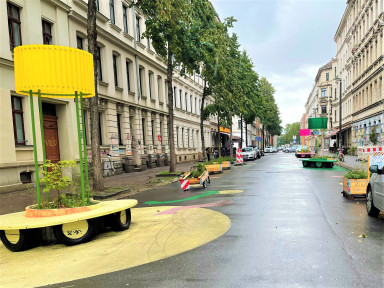
(2) In Gießen, a four-lane ring road for cars that encircles the city centre was to be repurposed as part of a year-long traffic experiment, ‘Verkehrsversuch am Anlagenring’ (Figure 2). During this time, the outer two lanes were to be designed for one-way car traffic, while the inner lanes were to be dedicated to cycling. The experiment was the result of a citizen proposal and its implementation was planned by the city. Before the construction work was completed, the experiment was declared unlawful and did not proceed.
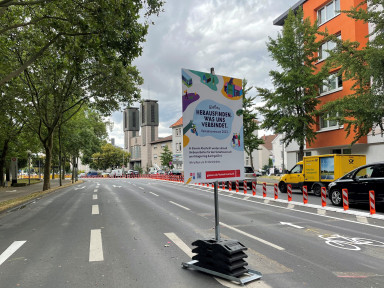
In order to provide assertions on the situatedness of the processes studied, the selection of case studies was based on the maximum variant rationale,3 distinguishing a variety of dimensions. These dimensions include the experiment’s organizational form (top-down or bottom-up implementation, funding, or structure), the scope of the experiment, and the types of intervention tested.
The comparative case study analysis uses ethnographic observations of meetings and public events, protocols, and other documentation of communication (e.g. email correspondence) to provide insights into negotiation processes. Qualitative interviews with actors involved clarifies their personal impressions, interests, and possibly their strategies used in negotiation. Using methods of photographic documentation, cartography, and document analysis, the outcomes implemented throughout the experiments and changes thereof are documented and mapped. The thematic content analysis of the data are squared with conceptualizations of relevant notions identified in an extensive literature review.
Supervisors:
